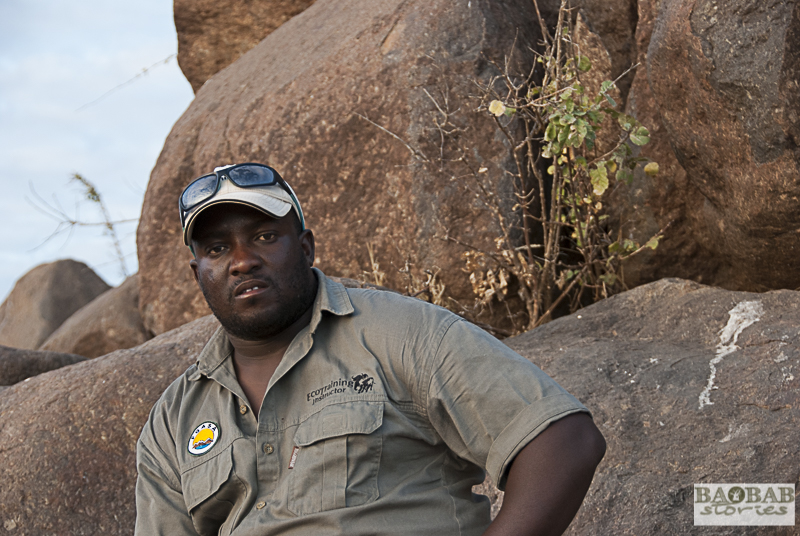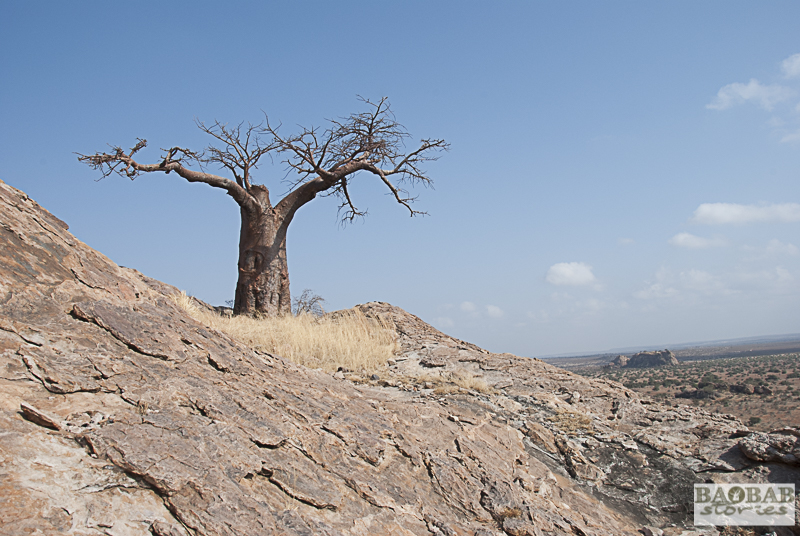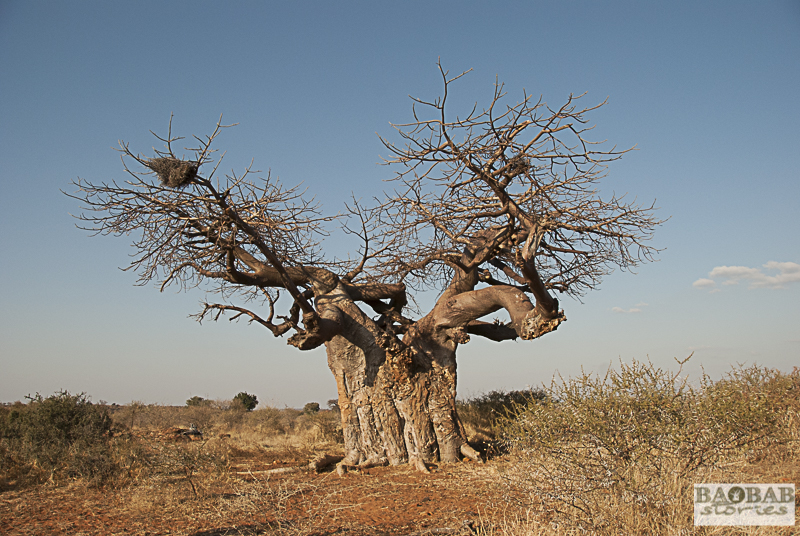
Lazarus Moalosi, Coalition Pool, Mashatu, Botsuana
The penultimate day of my “Wilderness Adventure” has dawned. We are out on another hiking trip in Mashatu in the Northern Tuli Game Reserve, Botswana. Our guide and instructor is Lazarus Moalosi. He leads us to the foot of Mmamagwa, a rock formation with an archaic flair. “Rhodes Baobab” – a very special baobab tree – resides on it. Some hundred years ago Cecil Rhodes left left his initials on the massive trunk of the tree. This baobab really is a tree of life as it survives under rough conditions on the top of this ancient rock formation.

Rhodes Baobab, Mmamagwa, Mashatu, Botsuana
We hardly covered some hundred meters as Lazarus indicates that we should stop. Francolins utter warning calls in the immediate vicinity – a good indicator that something exciting is about to happen – very promising, indeed.

Leopard, Mashatu Central, Botsuana
We line up in a row, binoculars on our eyes. The tension is almost tangible, everyone wants to be the first to discover whatever is about to reveal itself behind the bushes. We suspect a leopard on the rocks. The terrain is ideal for that. Only a few moments later some of our group spot the animal on a round, large rock: a resting leopard, beautifully exposed.
Less than five minutes later, Marnus, our group’s “eagle eye”, spotts the second leopard a few feet below the rock where we had seen the first one, a female. The male is much larger, its fur is grey. Slowly and quietly we move to the slope opposite and sit down on a few rocks. The leopards seem not to be bothered by us.

Mmamagwa, Mashatu, Botsuana
After some time, the female decides to move on. Slowly she walks along the rock formation. Every now and then she disappears behind dense shrubbery, escapes our gaze, only to reappear a few moments later. She stopps at a thick and scarred trunk of an ancient Baobab. I would have loved to see her climb the giant and settle comfortably on one of the thick branches. But she does not do us the favor and instead moves on and out of sight.

Rhodes Baobab, Mmamagwa, Mashatu, Botsuana
Later that day I sit down with Lazarus in the shade at the fire place of the EcoTraining Camp. He tells me that he comes from Bobonong, a small town about 90 kilometers west of the Mashatu Game Reserve. He grew up on the farm of his family. They kept cattle, sheep, goats and raised crops. During school holidays he helped on the farm. After completing his education, he intended to start a career in agriculture. But he changed his mind as he discovered his passion for wild animals. Lazarus took courses in tourism and business management. First he worked in Maun, later in various camps and lodges in the Okavango Delta. Only recently he joined the EcoTraining Camp at Mashatu where he works as an instructor for nature guides.

Baobab, Mashatu, Botswana
Baobabs in Lazarus’ life
“The baobab is called the ‘tree of life’,” says Lazarus. When he was a child he harvested fruits from the trees with his friends. They extracted the fruit powder from the hard shell and mixed it with milk to make a refreshing drink. Left overnight the mixture turns into a yoghurt which the boys enjoyed as well. His mother used the powder as a leavening agent for baking. It made the bread dough rise perfectly. They also used baobab to wash dishes. The ashes of burnt fruit shells are particularly suitable for it. Baobabs – especially the fruits – are used in traditional medicine. People are fond of the fruit’s high content in vitamin C. If people catch a cold they mix the powder with water and drink it.

Walking in the wilderness, Mashatu, Botswana
A story of baobab, the tree of life
Lazarus heard the story of the baobab and the hyena. According to it, the hyena was given a baobab. She got angry because she would have liked to get another tree but did not have a choice. While she was still angry and frustrated she planted the little tree upside down. Hence, the baobab is known as the “upside down tree”.

Lazarus Moalosi, Coalition Pool, Mashatu, Botsuana
